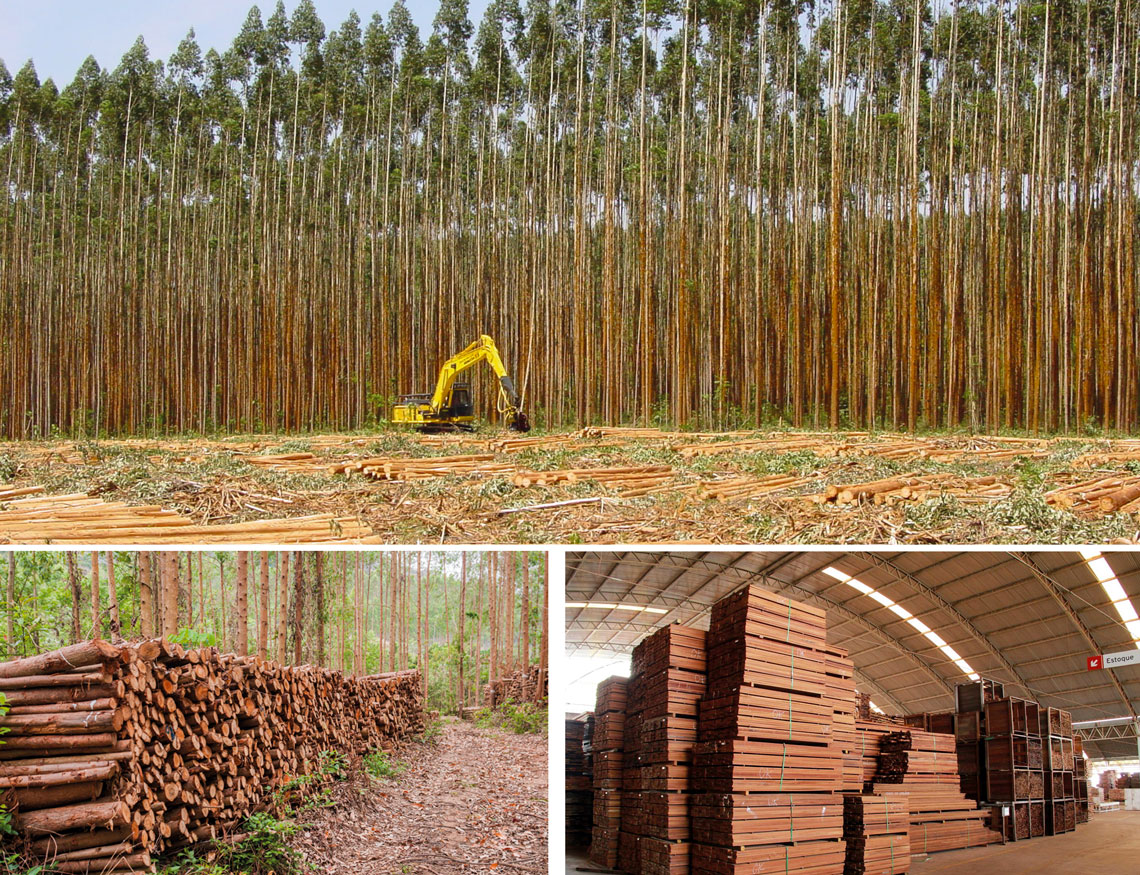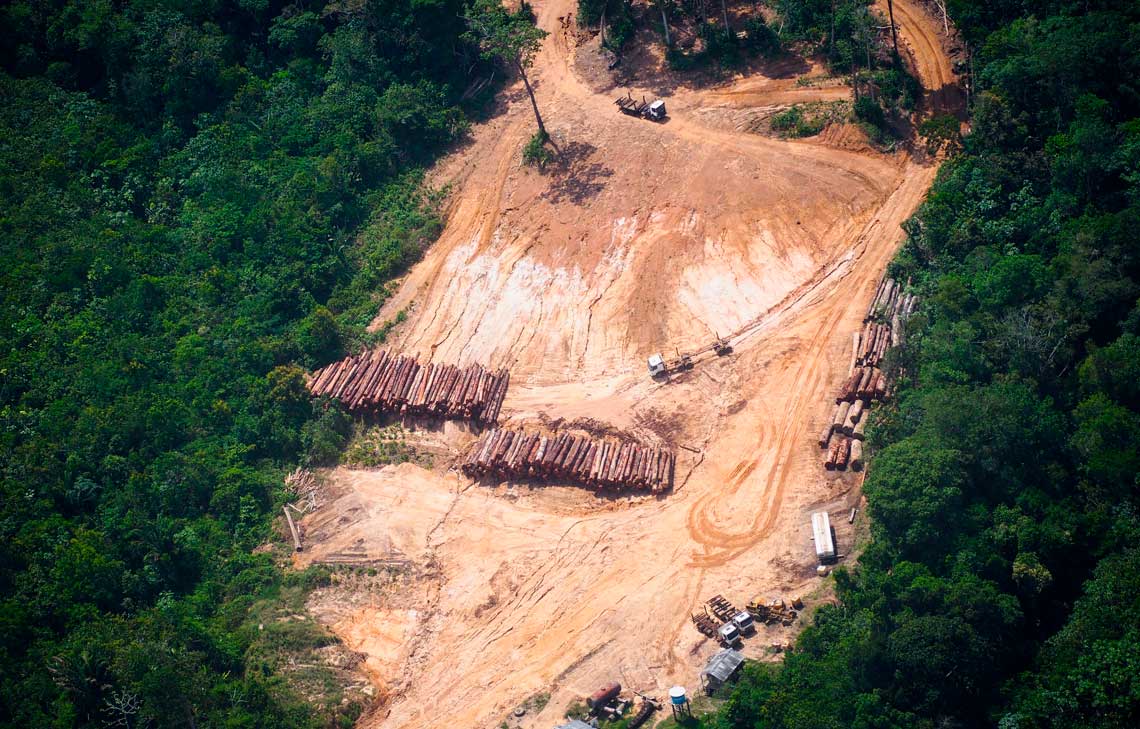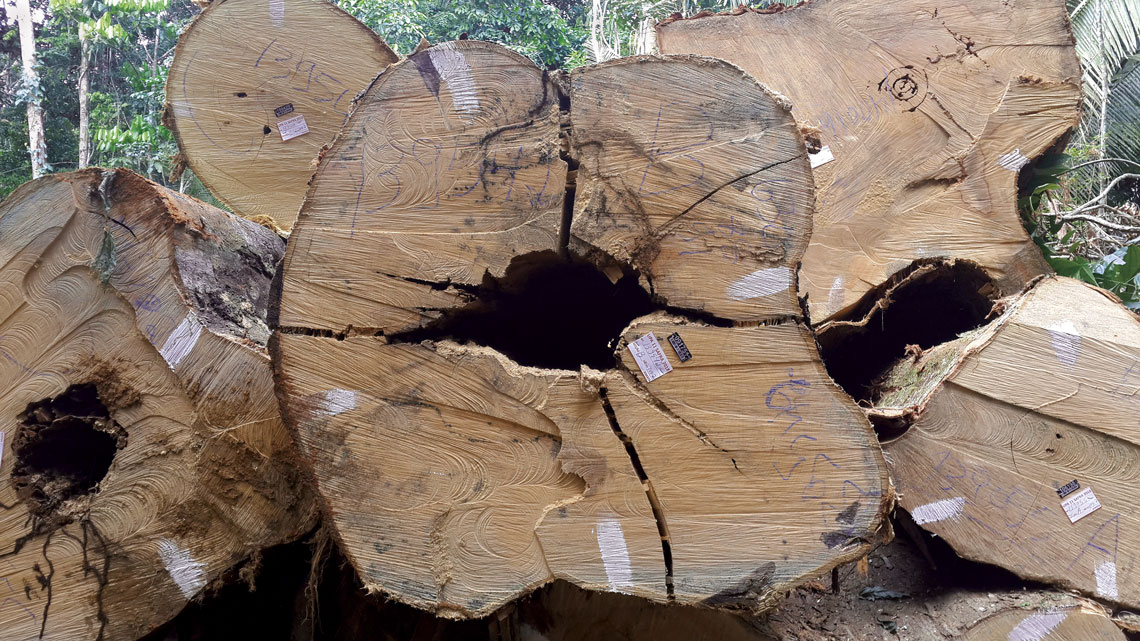In 2022, an area the size of 1.6 million soccer fields was cleared in the Amazon, the highest level of deforestation in the last 15 years. The 11,500 square kilometers (km²) cleared set a new deforestation record for the fifth year running, according to data from the Institute for Humans and the Environment in the Amazon (IMAZON). Between 2019 and 2022, a total of 35,193 km² was deforested, representing a 150% increase over the previous four-year period (2015–2018). This occurred against the backdrop of Brazil having committed to zero deforestation by 2030 and the European Union banning the import of commodities produced in deforested areas of the Amazon, a law that came into effect on January 1.
Public agencies, universities, and civil society organizations have adopted a range of initiatives in an attempt to reverse the situation and ensure areas of Brazilian rainforest are monitored and preserved, especially in the Amazon. One of the most active combat fronts is the development of wood-tracking systems and technologies, since illegal logging is harmful to the rainforest and is one of the main drivers of deforestation. It is estimated that around 40% of wood extraction in the Amazon is unauthorized.
One example of this effort was the 2022 launch of a new version of the Document of Forest Origin (DFO) called DFO+ Traceability, an update to the system for monitoring the transportation, industrialization, storage, and consumption of forest products originating in Brazil.
Like the DFO, implemented by the Brazilian Institute of the Environment and Renewable Natural Resources (IBAMA) in 2006, under the new system, licenses must be issued for the transportation of forest products and every stage of industrialization and consumption must be recorded. The difference is that it also enables wood products to be traced.
In 2020, the federal agency introduced mandatory controls for individual logs via an update to the National Forest Product Origin Control System (SINAFLOR). “Individually tracking logs is the basis of traceability,” explains Fernanda Simões, an environmental analyst and coordinator of flora monitoring at IBAMA. However, it was only last year that the agency implemented the functionality that enables this traceability to be extended to other stages of the production chain, which includes sawmills, vendors, and consumers of forest products.
Now, each legally felled tree is given a sequential and unique identifying number, physically recorded in a way that guarantees the information is permanent, including on logs stored in logging company yards before they are split. This can be achieved by attaching smalls plaques containing bar codes or QR codes to the logs.
“With DFO+ Traceability, every forest product is identified by a code determined by the authorization number from SINAFLOR and integrated state systems. For logs, the tracking code also includes the tree number. This code accompanies the product from the origin to its final destination,” says Simões.
Before the new system was implemented, illegal loggers commonly used false forest origin documents to make it appear that wood removed from unauthorized areas, such as indigenous lands, conservation units, and federal land, was legally obtained.
According to the IBAMA coordinator, DFO+ Traceability could also lead to a paradigm shift on the part of wood buyers. “The new system gives buyers the freedom to choose which region to purchase the forest product from. They can opt for wood that comes from sustainable forest management, armed with greater knowledge about the reputation of the company supplying the product,” says Simões.
Promising initiative
In addition to the new functionality of IBAMA’s DFO+ system, other tools and technologies for tracking wood are also being developed, implemented, and tested in Brazil. These include physical, chemical, and biological methods for verifying the origin of wood.

Rosana Clara Victoria Higa/Embrapa | Marcelo Dias Müller/Embrapa | Ronaldo Macedo da Rosa/EmbrapaFrom left to right: mechanized harvesting of eucalyptus; logs stored in the forest; and batches of wood ready for exportRosana Clara Victoria Higa/Embrapa | Marcelo Dias Müller/Embrapa | Ronaldo Macedo da Rosa/Embrapa
“There are projects at various stages of testing and validation. Their application on a large scale, however, is not yet feasible, primarily due to the lack of databases on commercial tree species in the Amazon,” says Marco Lentini, a forest engineer from the Institute of Forestry and Agricultural Management and Certification (IMAFLORA), a nongovernmental organization (NGO) based in Piracicaba, São Paulo.
One of these new technologies is being developed at the Center for Nuclear Energy in Agriculture (CENA), run by the University of São Paulo (USP) and headquartered in Piracicaba, where agronomy engineer Luiz Antônio Martinelli is leading a group of 10 researchers attempting to track wood through stable isotope analysis. The research is being carried out in partnership with the University of Brasília (UnB), the Federal Rural University of Amazônia (UFRA), and an NGO called The Nature Conservancy (TNC).
The idea is that stable isotopes can be used to track wood because the mass of the nucleus in an atom of a given chemical element is composed of the sum of its protons and neutrons. The number of protons is specific to each element — the nucleus of carbon, for example, contains six protons. The number of neutrons varies. In some forms carbon has six, in others it has seven or eight neutrons. These different forms of the same element are called isotopes.
Because isotopes are transferred between natural reservoirs such as the air, soil, and plants, the proportion of a given element’s isotopes can vary depending on the climate and environmental conditions in a specific geographic region. A certain ratio of isotopes in a plant is thus linked to the environmental characteristics of the location where the plant grew, like a kind of isotopic fingerprint of its surrounding environment.
“The isotopic composition of carbon, nitrogen, and oxygen depend on the characteristic parameters of a certain region. Wood from the state of Acre has a different isotopic composition to wood from the state of Pará. Thus, after analyzing the isotopic composition of a piece of wood, mathematical models can be used to determine the geographic coordinates of the tree’s origin,” explains Martinelli.
The biggest challenge with this method is to obtain a representative sample of trees from an area as vast and difficult to access as the Amazon. “So far, we have collected samples from around 250 trees in 20 locations, but we would like to have at least 50 sample sites. However, we have already outlined a methodology for collecting material in the field, preparing samples, and analyzing and interpreting the results using mathematical models to attribute origin,” he explains.
For Martinelli, a combination of different tools and methodologies is needed to monitor an ecosystem as complex as the Amazon. “The isotopic approach has the advantage of helping combat fraud while complementing systems such as the DFO,” he says.
Another wood-tracking initiative is being developed by startup GenomaA Biotech, based at the Piracicaba Technological Park. The technology is designed to identify timber based on the tree’s genetic code. The company develops tools to investigate and certify the legal origin of logs from authorized sustainable management areas, assuring importers and exporters of forest products.
“A small sample can be used to associate the genetic profile of each individual tree in the forest and the products derived from them to their population of origin, like a paternity test for wood,” explains forest engineer Fernanda Bortolanza Pereira, head of research and development at the company, which was founded in 2020. “The economic viability of this analysis is one of the obstacles to making traceability via DNA feasible.”
Lentini, from the NGO IMAFLORA, recognizes the efforts Brazil is making to enable traceability of forest products, but notes that most of the existing methods can be used to trace a certain wood product back to its area of origin without necessarily establishing a connection to the specific tree the product was created from. “In most systems, traceability down to the tree is lost at the sawmills, where incoming logs are processed in batches,” says Lentini.

Raphael Alves / AFP via Getty ImagesClearing opened in the Amazon by illegal loggersRaphael Alves / AFP via Getty Images
The forestry engineer also emphasizes the need to recognize that DFO+ Traceability and other tools do not fully guarantee traceability, since there are some companies and operators that falsify documentation. “A buyer of a certain wood product native to the Amazon cannot be completely sure that it came from the forest area declared on paper,” points out Lentini, also noting that even the engraving of sequential ID numbers on logs can be forged.
The specialist claims that some illegal logging practices in the Amazon have been integrated into the routines required by control systems. “The legality of a wood product cannot be guaranteed just because it is accompanied by official documentation. One common method of circumventing inspection is the inflation of wood credits,” he says. “Fraudsters obtain authorization to fell trees in areas where the abundance of one or more species has been artificially inflated. With artificial credits, it is possible to exploit wood from an indigenous reserve and have official documentation for the resulting products.”
Some sawmills manipulate conversion coefficients, generated when logs are converted into wood products, allowing products of illegal origin — from a conservation area, for example — to be mixed with material from licensed areas and thus legitimized. “Even the most advanced tracing techniques cannot stop all timber of illegal origin passing through. It is a difficult problem to solve, and technology alone is not the answer. The procedures linked to traceability, processes, and transparency can make the difference,” highlights the expert.
Planting of native species
Ricardo Ribeiro Rodrigues, a biologist from USP’s Luiz de Queiroz College of Agriculture (ESALQ) in Piracicaba, agrees that wood extraction traceability initiatives are important, but he makes a caveat. “We need to invest in public policies that encourage the commercial planting of native wood species, mainly on degraded pastures, which is known as native silviculture,” he says. “This has already been done with exotic wood species, such as pine and eucalyptus.”
Native species silviculture offers several advantages, according to the specialist. “It would help to mitigate climate change due to the greater carbon accumulation than a degraded pasture, generate green jobs, and add value to wood products, as well as preventing the degradation of remaining forests due to logging, which is the main cause of deforestation.”
Republish